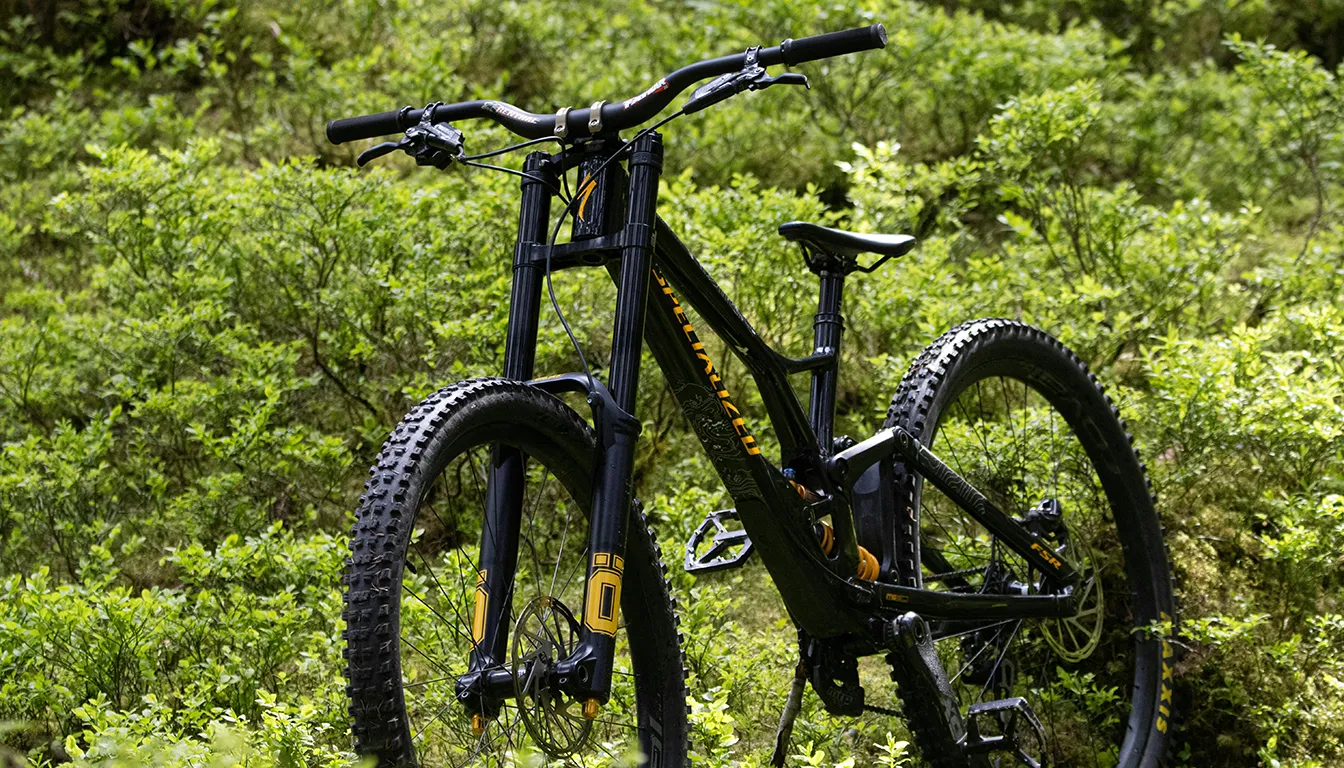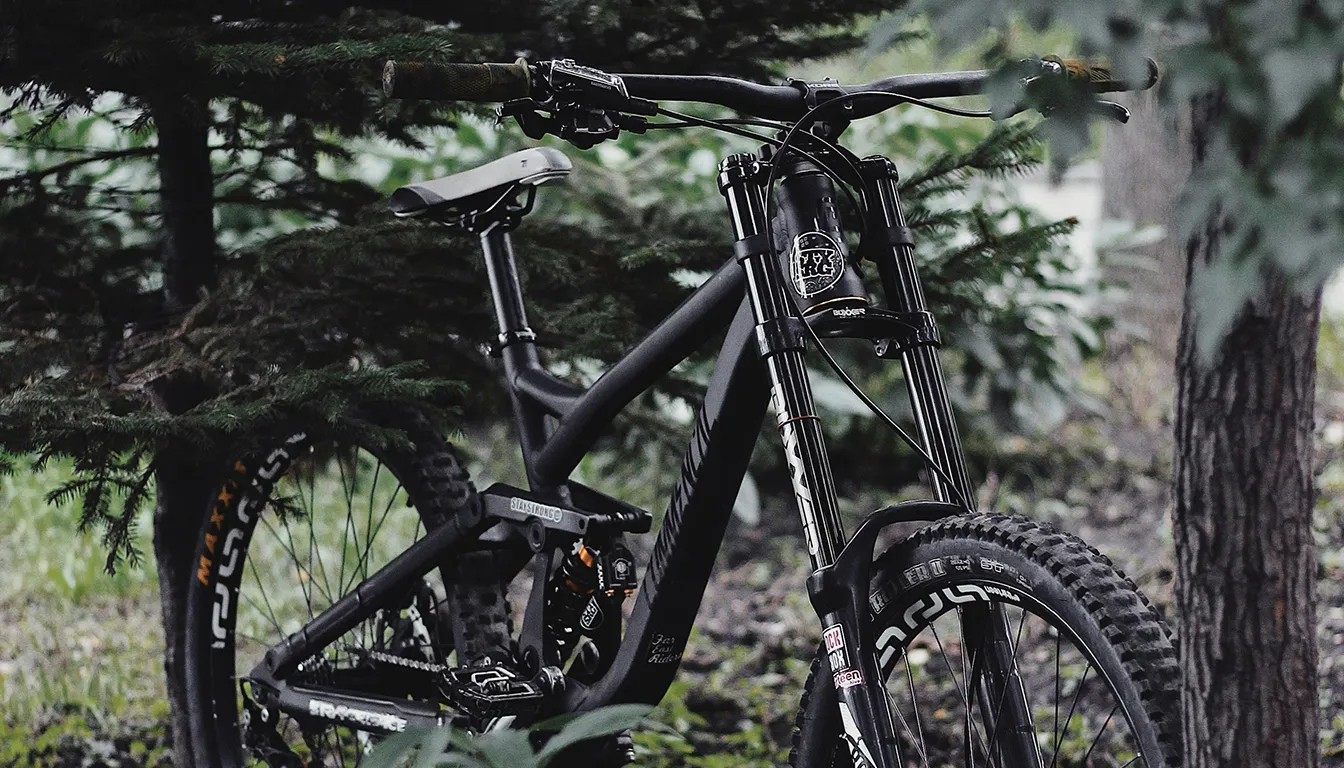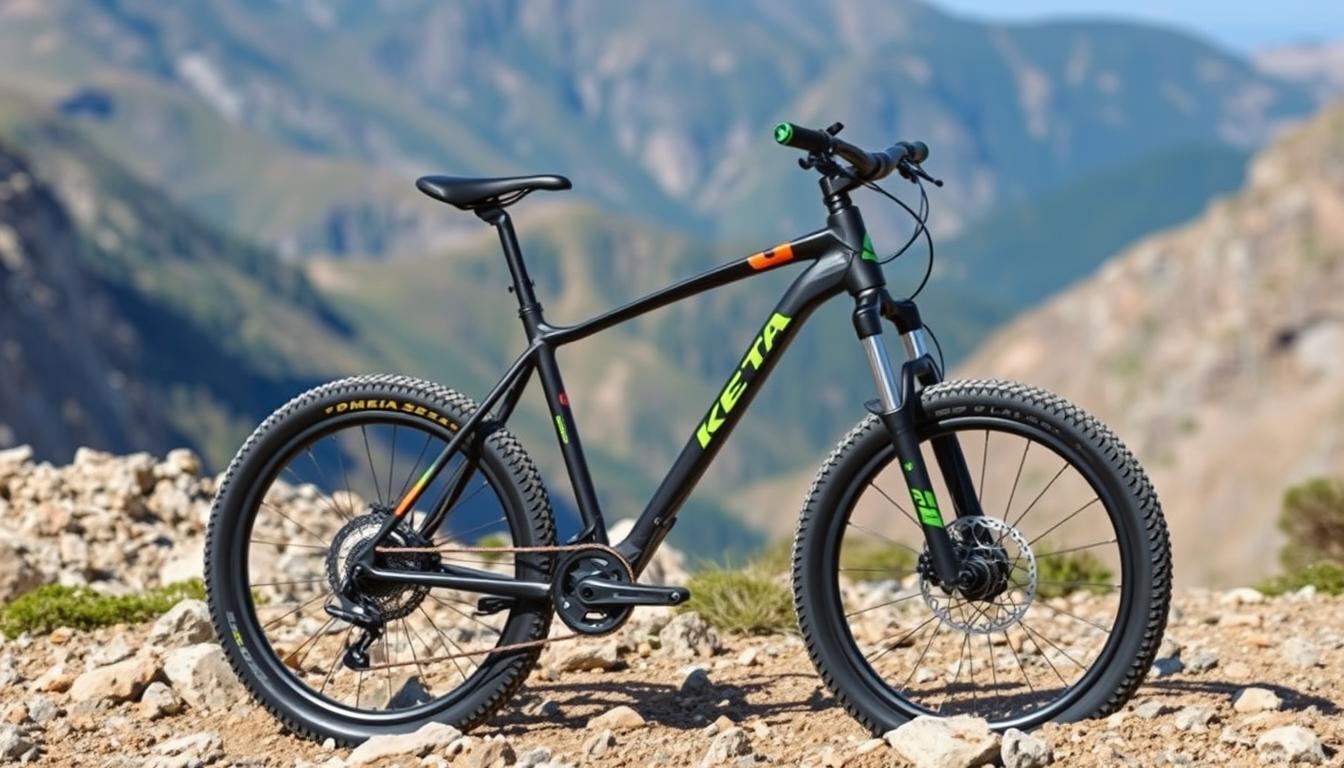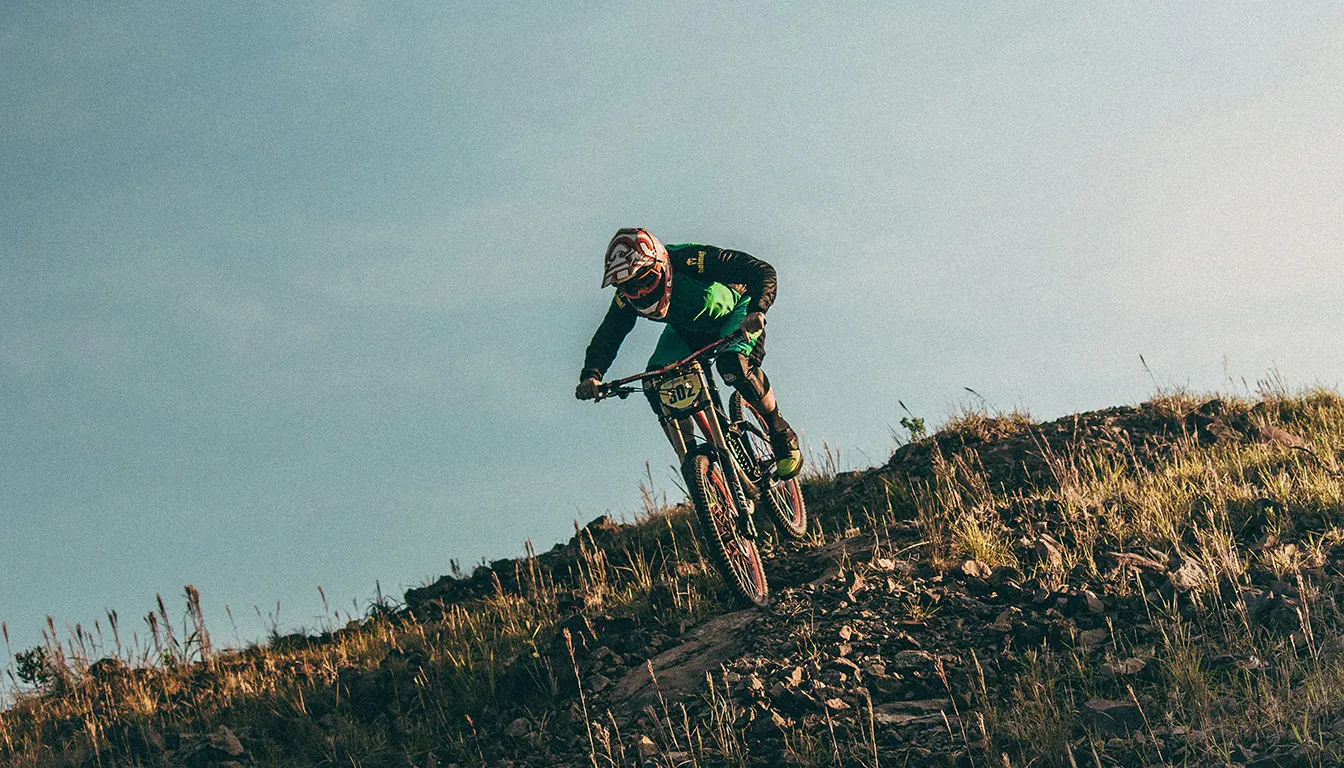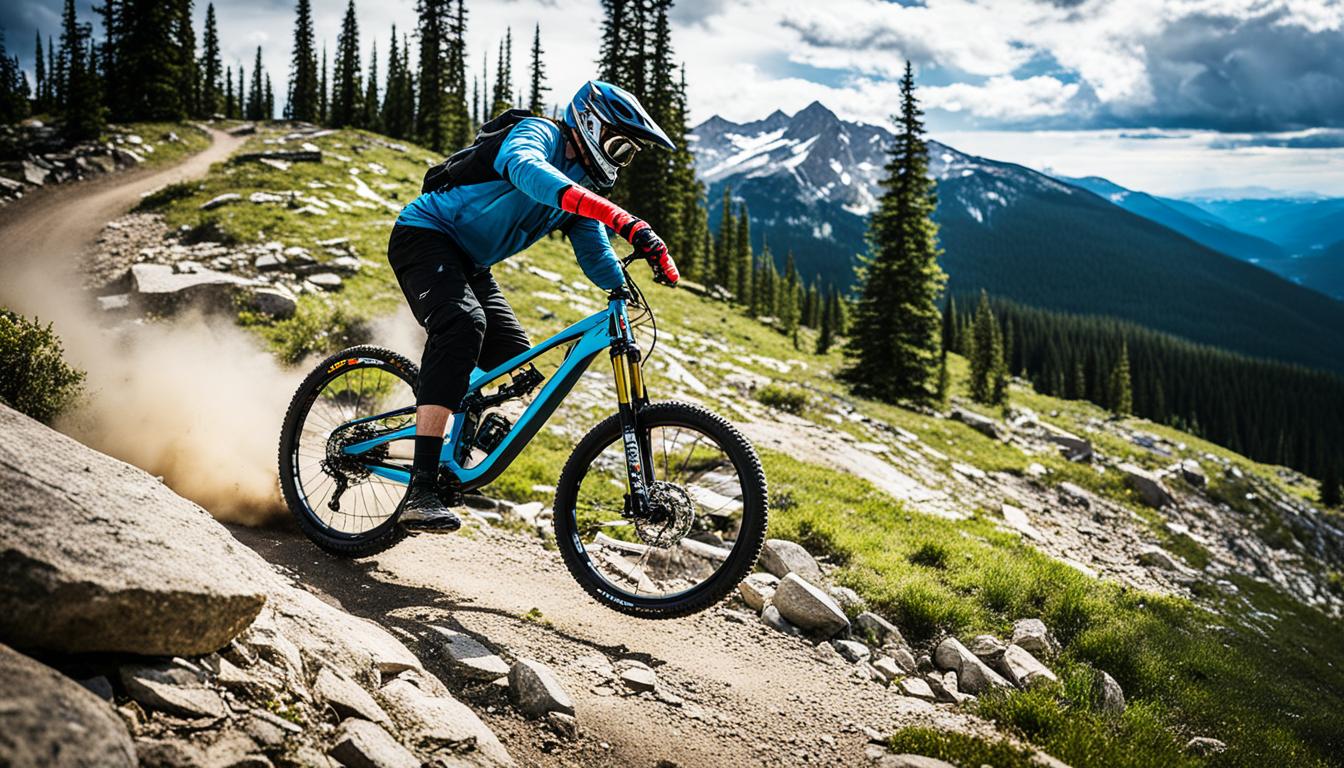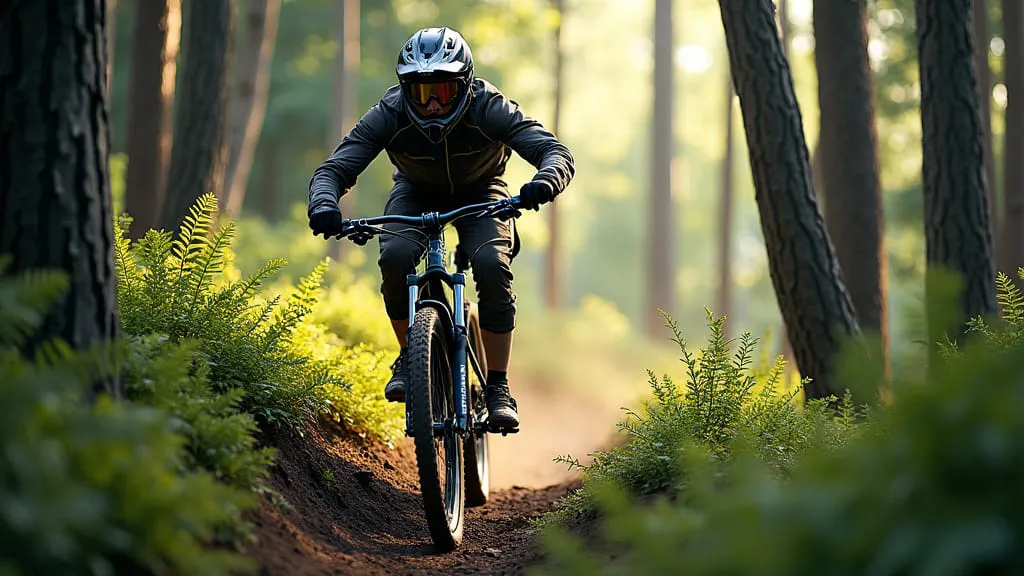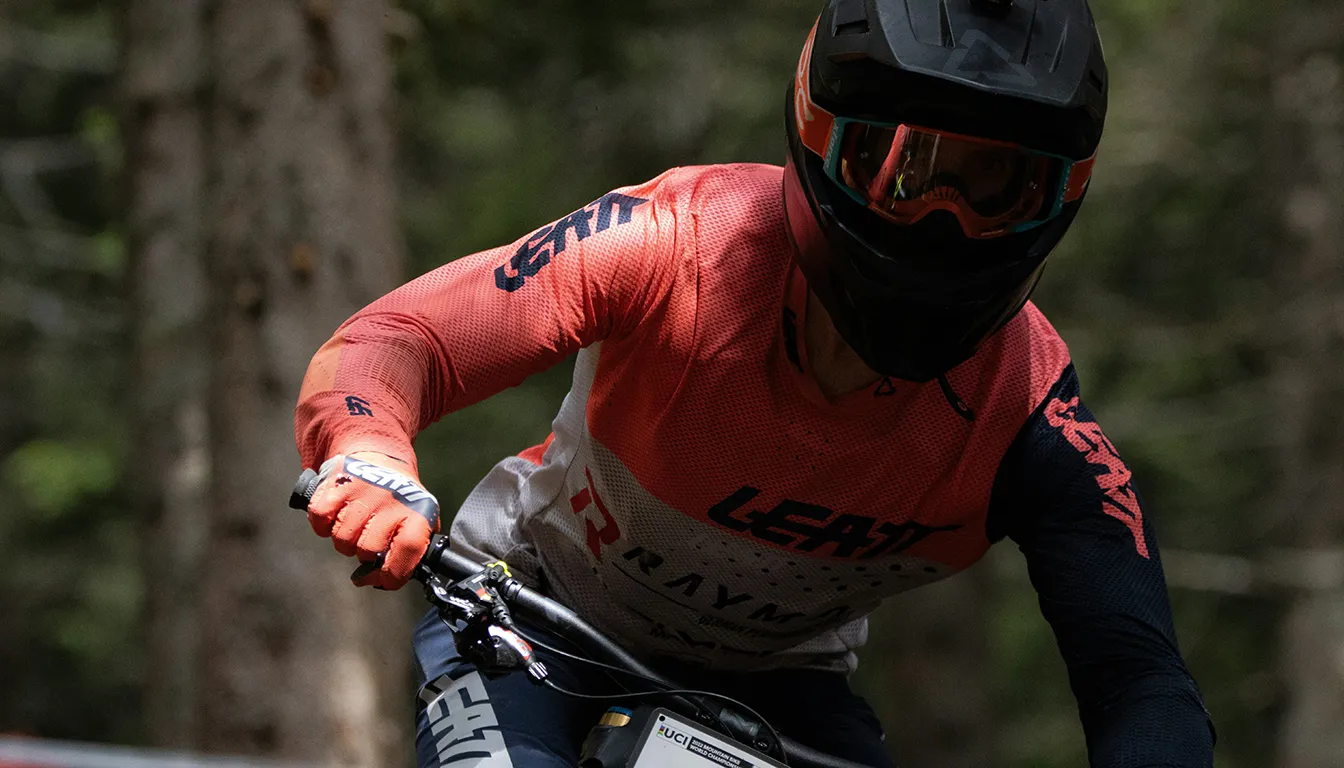Downhill mountain biking on technical trails is highly sought after in the UK. The right bike is key for mastering tough terrains with steep drops and tricky obstacles. It’s important to look at performance, durability, and how the bike handles because these factors hugely influence your biking joy.
We’ll focus on how to choose a downhill bike for the unique challenges of technical trails. We’ll cover the main features of such bikes and discuss what really matters. This guide is here to help you make a well-informed choice for your upcoming adventure.
Understanding Downhill Mountain Bikes
Downhill mountain bikes are built for fast downhill rides. They stand out from other bikes due to their downhill mountain bike definition. These bikes are for riders who love steep and tough trails. They focus on lots of suspension travel. This provides stability and control while going downhill.
What Defines a Downhill Mountain Bike?
Downhill bikes have unique bike specifications for steep drops and tough trails. They typically have a suspension travel of 200mm or more. This helps absorb big shocks. Their design includes slacker angles for better stability and control. They also have strong components to handle big impacts.
Key Features to Look For
When choosing a downhill bike, it’s important to know the key features. You should consider:
- Suspension Travel: Aim for 200mm or more for the best performance.
- Frame Material: Downhill bikes are mostly made of aluminium or carbon to be strong.
- Wheel Size: Bigger wheels, like 27.5 or 29 inches, give better grip.
- Braking Systems: Larger rotors, about 220-230mm, offer stronger stopping power.
- Drivetrain: They usually have a 7-speed setup, different from other bikes.
Differences Between Downhill and Trail Bikes
The key differences between downhill vs trail bikes help buyers choose wisely. The differences include:
- Suspension Travel: Downhill bikes offer much more travel than trail bikes, which have 120-150mm.
- Weight and Durability: Downhill bikes are heavier but tougher, built for rough rides.
- Riding Position: They ensure a lower centre of gravity for better stability downhill.
- Intended Use: Downhill bikes are for steep trails, while trail bikes balance climbing and descending.
Top Characteristics of Bikes for Technical Trails
When you pick a mountain bike for technical trails, it’s essential to know a few key traits. Good bikes for this task need great suspension, the right frame shape, proper wheel size, and specific tyres. Each part is crucial to make sure the bike does well on tough paths.
Suspension and Travel Considerations
Suspension matters a lot on uneven paths and steep hills. Bikes with longer suspension travel absorb bumps better, offering a smoother journey. This is especially true for downhill bikes, which need over 180mm of travel for steep slopes. Knowing about different suspensions will help you find a bike that fits your riding.
Geometry and Wheel Size Importance
The shape and size of a bike affect how it handles and stays stable. A slacker front angle means better stability going downhill. The size of the wheels is important, too. Bigger, 29-inch wheels go over obstacles easier, while 27.5-inch wheels are better for quick, technical moves. Think about these things to boost your performance on tricky trails.
Tyre Types for Enhanced Traction
Tyres are key for grip and control. Wide tyres with deep treads give better hold on wet rocks and mud, important for technical paths. Look at the tyre’s material and tread design, as they affect traction and how long the tyre lasts. Choosing the right tyres means your bike will handle well in all situations. For more about mountain bike types and details, see detailed insights here.
Best Downhill Mountain Bikes for Technical Trails
When you’re on technical trails, the right downhill mountain bike makes a huge difference. We’re looking into top models for challenging terrains. They stand out with their features and how they perform.
Ibis Ripmo V2 XT: All-Round Performance
The Ibis Ripmo V2 XT shines with 29-inch wheels and 147mm rear travel. It’s stable and agile, great for various terrains. It’s a top pick for those who love tackling technical trails with a versatile bike.
Revel Rascal XO Transmission: Versatility and Suspension
The Revel Rascal features 29-inch wheels and 130mm rear travel. It uses modern suspension for smooth rides on rough paths. It’s quick to maneuver, making it ideal for tricky trails.
Specialized Stumpjumper EVO Comp: Adaptable and Plush
The Specialized Stumpjumper EVO Comp offers comfort with its 29-inch wheels and 150mm rear travel. You can adjust its geometry for better performance on different trails. It keeps you comfortable on long rides too.
Yeti SB140 LR T2 TURQ: Precision Handling for Tough Terrain
The Yeti SB140 LR T2 TURQ has 29-inch wheels and 140mm rear travel. Though its geometry isn’t adjustable, it’s designed for steep and technical descents. It handles precisely on tough terrain.
Ibis Ripley GX Eagle: Lightweight and Playful
The Ibis Ripley GX Eagle is light, with 29-inch wheels and 120mm rear travel. Its playful nature offers a fun ride. It’s great for those wanting a quick, responsive bike on technical trails.
Ibis Ripmo AF NX Eagle: Budget-Friendly With Great Features
The Ibis Ripmo AF NX Eagle is a great deal, with 29-inch wheels and 147mm rear travel. It’s budget-friendly but still packed with quality. It’s ideal for riders who want a good bike without spending a lot.
Factors to Consider When Choosing a Downhill Bike
Finding the right downhill bike can seem hard. There are important factors to think about. Knowing your budget and what the bike is made of can help you choose. The shape of the bike also affects how it moves on different grounds. This is key to a good ride.
Budget and Value for Money
Downhill bikes vary a lot in price. The simpler ones may cost about £2,000, and the top ones can go beyond £10,000. It’s key to look for value in the bike you choose. Paying more often means getting better parts and a bike that lasts longer on tough paths. It’s good to find a bike that’s worth its price but doesn’t break the bank.
Frame Material: Carbon vs. Alloy
Choosing between carbon and alloy is big for your bike’s performance and weight. Carbon is usually lighter and smoother over bumpy paths. But, alloy is tougher and less costly, which many prefer when they want to save money. Knowing the good and bad of each can lead you to a bike that fits how you ride and your budget.
Importance of Adjustable Geometry
Being able to change your bike’s setup is a game-changer. You can adjust the bike to better fit different kinds of land and how you like to ride. This means easier control on steep downhills and steadier rides on flat areas. If you want to perform your best on various trails, look for a bike that lets you change its geometry.
Expert Recommendations and Reviews
Experts are key in helping buyers choose the right downhill mountain bike. They give insights on how bikes perform on different terrains. This section talks about what to look out for, based on real tests.
Insights from Test Riders and Industry Experts
Test riders offer first-hand knowledge on bikes’ pros and cons. For example, the Transition Spur is light at 11.25kg, perfect for those who like speed. The Santa Cruz Tallboy, heavier at 13.08kg, is great for stability. Both are good at handling tricky trails; the Spur is quick, and the Tallboy is comfy and sharp.
Comparative Features Across Top Models
Different bikes stand out for various reasons. The Trek Top Fuel 8 is heavy at 14.89kg but great for going up and down hills. The Canyon Neuron 6, slightly lighter at 14.63kg, is known for its balanced design and smooth ride. The light YT Izzo Uncaged 7, at just 11.4kg, shows that less weight can improve the ride.
The Orange Stage Evo, at 13.83kg, proves that even heavier bikes can handle well. In the end, these reviews guide riders to choose a bike that fits their style and skill level.
Conclusion
Choosing the right downhill mountain bike means thinking about what you need, how you ride, and where you’ll be cycling. With enduro biking getting more popular, seen at events like Ardrock Enduro, bikes that do well both uphill and downhill are in demand. These bikes fit well with the UK’s varied mountain biking scenery.
Downhill mountain bikes are made for steep, rough paths. They are strong and have special suspension systems. When picking a bike, listen to what experts and experienced riders say. Think about new ways to own a bike, like sharing, which can save money.
Whether you pick a pure downhill bike like the Commencal Supreme or something for all trails, what matters is it suits you. This will make your rides across the UK’s thrilling landscapes better. Want to know more about enduro and downhill bikes? Check out this guide. And to find the best trails, see this resource.
FAQ
What features should I look for in a downhill mountain bike?
For a downhill mountain bike, consider these features. Look for long suspension to deal with rough spots. Choose robust frames, like carbon or alloy. The right wheel size helps with obstacles. And don’t forget strong brakes for safe downhill rides.
How do downhill mountain bikes differ from trail bikes?
Downhill bikes are for steep, tough rides with longer suspension. They focus on control and stability and are built tough. Trail bikes are lighter, good for up and down hills. They are agile but have less suspension.
Why is suspension travel important for technical trails?
Suspension travel helps a bike handle shocks and bumps on tough trails. More travel means smoother rides on steep hills. Less travel gives the bike agility for tricky spots.
What is the best budget downhill bike?
The Ibis Ripmo AF NX Eagle is a top choice for budget riders. It offers top features without the high cost. It’s great for those who want a good downhill ride without spending a lot.
How does frame material affect my bike’s performance?
Your bike’s frame material impacts its weight, ride, and cost. Carbon frames are light and smooth but pricey. Alloy frames are strong and less expensive but heavier and less comfortable.
Can adjustable geometry benefit my riding experience?
Yes, adjustable geometry lets you change your bike’s handling to suit you. It’s great for tackling different trails well. This makes your bike more versatile.
What are some top-rated downhill mountain bikes for technical trails?
Top bikes for tough trails include the Ibis Ripmo V2 XT for balance. The Revel Rascal XO Transmission is versatile. The Specialized Stumpjumper EVO Comp is known for comfort. And the Yeti SB140 LR T2 TURQ for precise control.
How do I choose the right tyres for technical descents?
Choose wider, grippier tyres for technical trails. They improve stability and control. This is crucial for tricky surfaces like slick rocks and roots.
